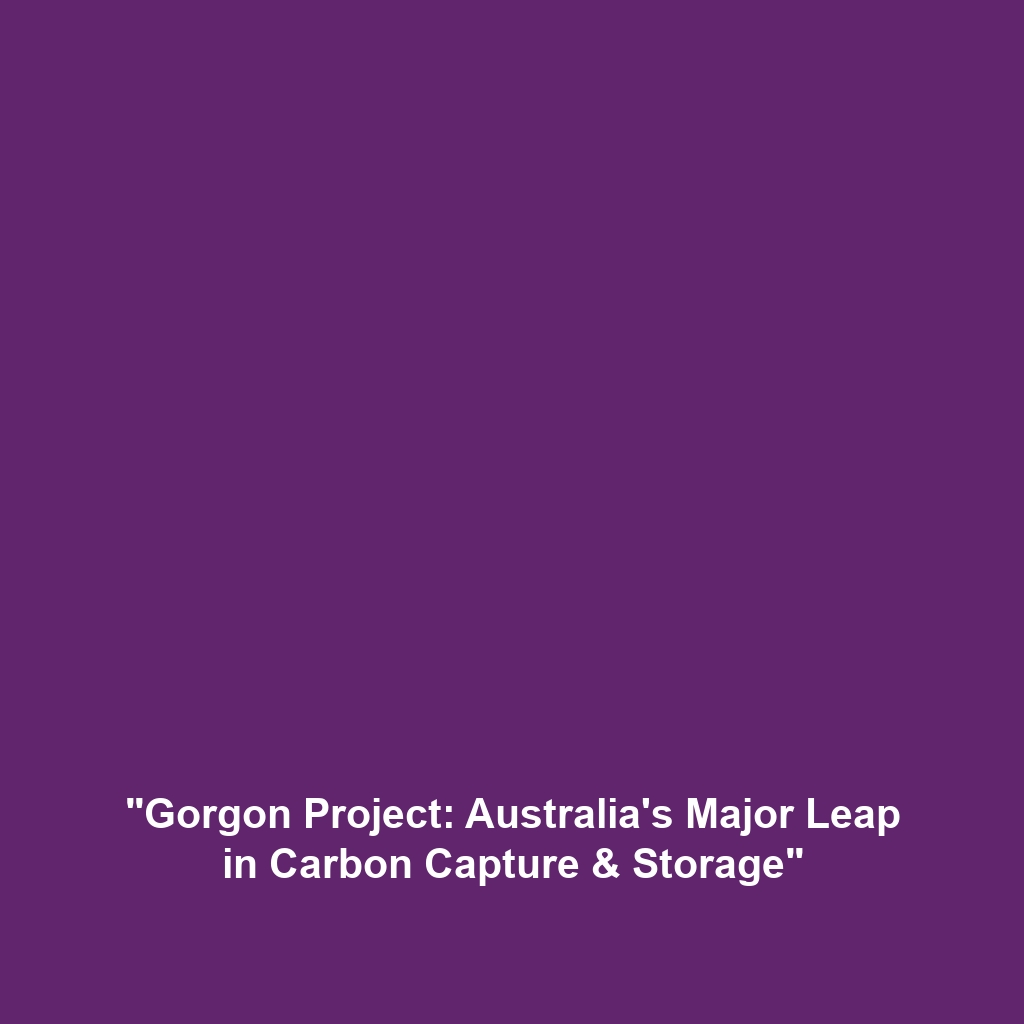Mitigating CO2 Leakage Risks in Carbon Capture & Storage (CCS)
The risk of CO2 leakage has become a pivotal concern in the field of Carbon Capture & Storage (CCS). As the world accelerates efforts to reduce greenhouse gas emissions, ensuring the safety and reliability of CCS technologies is essential. This article delves into the extensive monitoring technologies and safety protocols established to mitigate leakage risks, thereby safeguarding both the environment and public trust in sustainable energy solutions.
Key Concepts of CO2 Leakage Risks
Understanding the risk of CO2 leakage is crucial within the broader framework of Carbon Capture & Storage (CCS). Here are some key concepts:
- CO2 Leakage: The unintended release of carbon dioxide from storage sites, potentially impacting the environment.
- Monitoring Technologies: Advanced systems such as seismic monitoring, soil gas sampling, and remote sensing that detect CO2 migration.
- Safety Protocols: Procedures and regulations set by governing bodies to ensure the integrity of underground storage sites.
Applications and Real-World Uses
Applications of monitoring technologies and safety protocols for CO2 leakage in Carbon Capture & Storage (CCS) are widespread:
- Power Plants: Facilities that capture emissions and store CO2 underground are using real-time monitoring to ensure safety.
- Oil Recovery: Enhanced oil recovery techniques are implementing CCS solutions while monitoring for potential leakages.
- Research Institutions: Organizations are developing innovative monitoring solutions to assess the long-term tightness of storage sites.
Current Challenges in CO2 Leakage Management
Despite significant advancements, challenges remain concerning the risk of CO2 leakage:
- Detection Limitations: Current technologies may not detect small leaks promptly.
- Public Perception: Concerns about safety can hinder the acceptance of CCS projects.
- Regulatory Frameworks: Inconsistent regulations across regions can complicate the implementation of safety measures.
Future Research and Innovations
Looking forward, research into improved monitoring technologies and innovative solutions is essential to address the risk of CO2 leakage in Carbon Capture & Storage (CCS). Some promising areas include:
- Advanced Imaging Techniques: Next-generation imaging methods that enhance leak detection sensitivity.
- Artificial Intelligence: Machine learning models that predict leakage patterns based on historical data.
- Robust Simulation Models: Research aimed at accurately simulating geological behaviors under CCS conditions.
Conclusion
Addressing the risk of CO2 leakage is a complex yet vital component of advancing Carbon Capture & Storage (CCS) technologies. With extensive monitoring technologies and robust safety protocols in place, we can significantly reduce these risks. Ongoing research and innovation will continue to enhance our understanding and management of these challenges. To learn more about CCS initiatives, visit our CCS Initiatives page or read our article on Monitoring Technologies in CCS.





